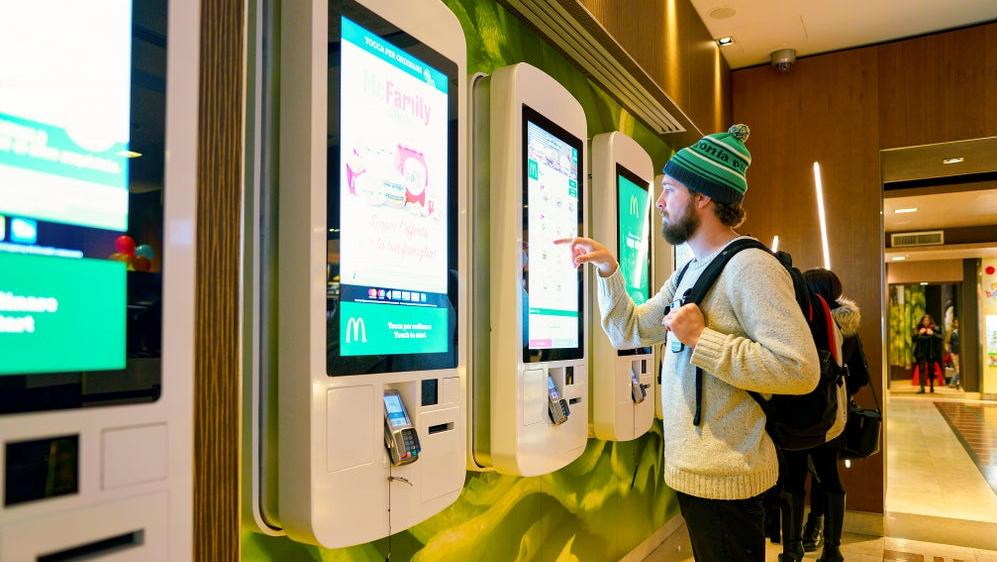How You Feel About Self-Order Kiosks Is Irrelevant
There's a reason that we'll start seeing more and more screens at restaurants.
I recently tried my first-ever Taco Bell Crunchwrap Supreme, with a number of customizations and a side of fiesta potatoes, plus a Nachos BellGrande thrown in for good measure. Combine that with my husband's customized Crunchwrap and side, and we realized with a jolt when we sat down to eat that we had spent roughly $30. At Taco Bell. And we hadn't even ordered drinks. That, friends, is the power of the digital ordering kiosk.
For years now, digital ordering kiosks have been popping up at an increasing number of fast food and fast casual chain locations, from McDonald's to Taco Bell to Shake Shack. I always figured this was a labor-saving move, one designed to handle more customers with fewer employees hired to work the registers. And while that might have been the original intention (and is indeed one of the reasons they're being deployed amid fast food's labor shortages), the data seemingly points to another potential benefit: Customers spend more when they place their order via kiosk.
Why we spend more at fast food kiosks
Granted, much of the data is being provided by trade publications specializing in kiosk technology—but the fact that these groups highlight data surrounding average check size as much as increased efficiency is certainly notable. Vending Times magazine explains that touchscreen ordering provides more opportunity to upsell the customer on customizations, add-ons, and bundles, something that can occasionally fall by the wayside within an in-person transaction.
"While the number of guests standing in line determines how much time a staff will put into upselling a customer, a self-service kiosk can automatically get the job done," they write.
That tracks with what Shake Shack CFO Katherine Fogertey said on a call with analysts cited by PYMTS, in which she lauded the chain's installation of self-ordering kiosks and called them "one of our highest margin channels." Toast similarly lists increased ticket sizes among its reasons to invest in the hefty upfront costs of installing a kiosk.
GRUBBRR, a company specializing in self-ordering technology, claims that Florida-based burger chain BurgerFi saw an 18.5% increase in ticket size after installing digital kiosks, "with 52 percent of diners opting into an AI-driven upsell." Personally, I could definitely see myself placing a special order with a machine despite almost never requesting one from a server. I get stressed in service situations and prefer a frictionless experience, whereas a machine can directly convey my preferences to the kitchen without requiring a game of telephone.
This is not to say I prefer ordering at a kiosk; indeed, if these facts and figures are correct, my wallet would probably be better off if I placed orders in person from now on. But no matter my preferences, walking into a restaurant and immediately being confronted by those giant, glowing screens is likely to become more of an everyday occurrence, knowing what those screens can persuade us to spend.
